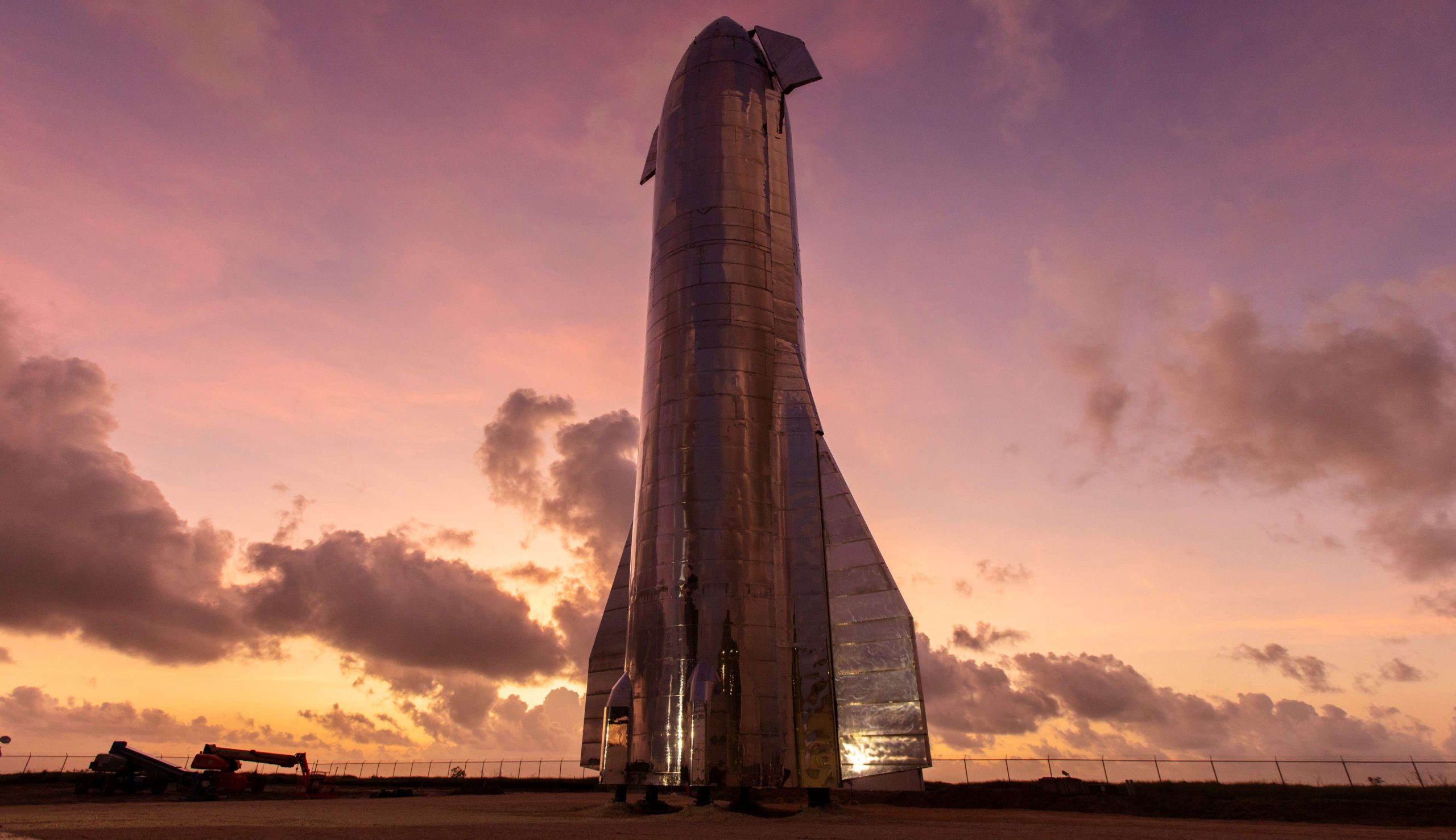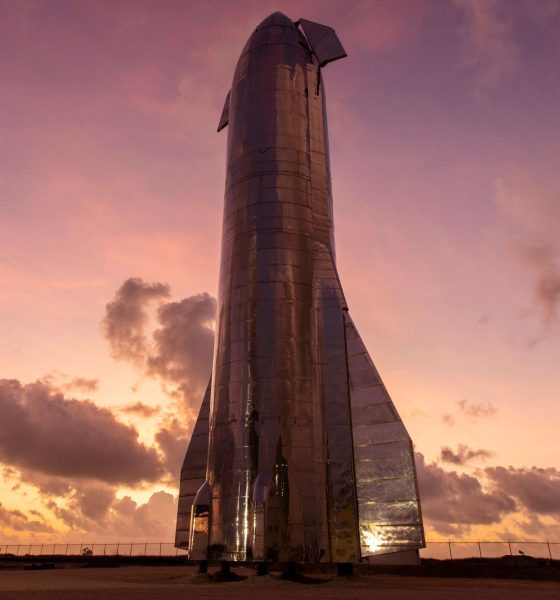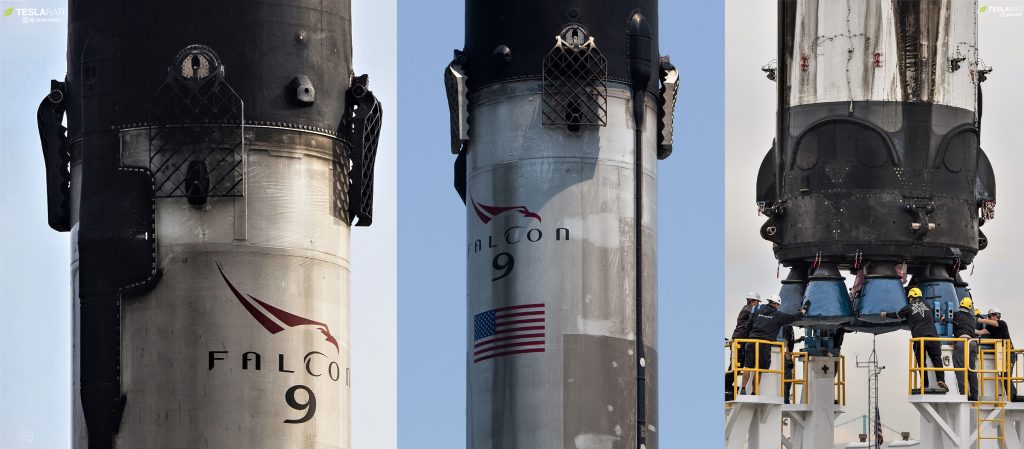

News
SpaceX Mars landing expert talks Starship recovery challenges in new interview
Formerly responsible for developing Falcon 9 (and Heavy) into the routinely-landing reusable rocket it is today, senior SpaceX engineer Lars Blackmore says he now has one primary focus: figuring out how to land Starship on Earth, the Moon, and Mars.
A graduate of University of Cambridge and MIT, the latter of which interviewed him on October 23rd for an “Alumni Stories” blog, Lars Blackmore has become famous for his groundbreaking work in guidance, navigation, and control (GNC). After graduating with honors from Cambridge and earning a PhD from MIT, Dr. Blackmore joined NASA in 2007 and immersed himself in “precision Mars landing”, part of a more general focus on figuring out how to autonomously control vehicles in uncertain conditions.
In his last year at NASA, Blackmore co-invented an algorithm known as G-FOLD (Guidance for Fuel Optimal Large Divert) that should theoretically enable precision landings on Mars, improving the state of the art by two full orders of magnitude (+/- 10 km to +/- 100 m). In 2011, he departed NASA and joined SpaceX, where he lead the development of the GNC technology needed to successfully and reliably recovery Falcon 9 boosters. Although the same could be said for any number of critical, groundbreaking systems that had to be developed, the onboard software that autonomously guides Falcon 9 landings on the fly is one of many things that booster recovery and reuse would be wholly impossible without.
After numerous failed attempts, all part SpaceX’s preferred learning process, Falcon 9 successfully landed for the first time on December 21st, 2015. As they say, the rest is history: in the roughly four years since that milestone landing, SpaceX has successfully completed 57 orbital launches, recovered boosters 43 more times, and reused flight-proven boosters on 23 launches. Since that first success, more than half of all SpaceX launches have been followed by a successful booster landing (or two).

Back to Mars
In 2018, Dr. Blackmore officially took on a new full-time role as SpaceX’s Principal Mars Landing Engineer. As the namesake suggests, this meant handing (now semi-routine) Falcon 9 and Heavy GNC development to a strong team and beginning to tackle an array of new problems that will need to be solved for SpaceX to reach the Moon, Mars, and beyond.
Following radical design modifications made to Starship in 2018 and again in 2019, SpaceX is pursuing a radically different method of recovery with Starship (the upper stage), while Super Heavy will more directly follow in the footsteps of Falcon 9/Heavy. Starship, however, is being designed to perform a guided descent more akin to a skydiver falling straight down, using flaps at its nose and tail (explicitly “not wings”) to accurately guide its fall.
As little as a few hundred meters above the ground, Starship will then perform a radical maneuver, igniting its Raptor engines to flip around, burn in the opposite direction to counteract that sideways boost, and finally coming in for a precise landing on Earth/Mars/the Moon.
Beyond the new GNC software and knowledge needed to make that maneuver real, Blackmore is also responsible for Starship atmospheric entry, no less critical to enabling precise, repeatable landings from orbital velocity to touchdown. In his recent interview with University of Cambridge staff, Lars revealed that his role as Principal Mars Landing Engineer involved a far wider scope than his previous GNC-centered work, with the goal instead being to design a launch vehicle (Starship) from the ground up to be easily recovered and reused. Falcon 9 Block 5 may be radically different than the ‘V1.0’ rocket that debuted in 2010, but it’s still ultimately a product of retroactive engineering.
With Starship and Super Heavy, SpaceX instead wants to take the vast wealth of knowledge and experience gained from F9/FH and build the vehicle from the ground up to be optimized for full reuse. Ultimately, Dr. Blackmore stated that “landing Starship will be much harder than landing Falcon 9, but if [SpaceX] can do it, it will be revolutionary.”
Check out Teslarati’s Marketplace! We offer Tesla accessories, including for the Tesla Cybertruck and Tesla Model 3.

Elon Musk
Elon Musk’s X will start using a Tesla-like software update strategy
The initiative seems designed to accelerate updates to the social media platform, while maintaining maximum transparency.

Elon Musk’s social media platform X will adopt a Tesla-esque approach to software updates for its algorithm.
The initiative seems designed to accelerate updates to the social media platform, while maintaining maximum transparency.
X’s updates to its updates
As per Musk in a post on X, the social media company will be making a new algorithm to determine what organic and advertising posts are recommended to users. These updates would then be repeated every four weeks.
“We will make the new 𝕏 algorithm, including all code used to determine what organic and advertising posts are recommended to users, open source in 7 days. This will be repeated every 4 weeks, with comprehensive developer notes, to help you understand what changed,” Musk wrote in his post.
The initiative somewhat mirrors Tesla’s over-the-air update model, where vehicle software is regularly refined and pushed to users with detailed release notes. This should allow users to better understand the details of X’s every update and foster a healthy feedback loop for the social media platform.
xAI and X
X, formerly Twitter, has been acquired by Elon Musk’s artificial intelligence startup, xAI last year. Since then, xAI has seen a rapid rise in valuation. Following the company’s the company’s upsized $20 billion Series E funding round, estimates now suggest that xAI is worth tens about $230 to $235 billion. That’s several times larger than Tesla when Elon Musk received his controversial 2018 CEO Performance Award.
As per xAI, the Series E funding round attracted a diverse group of investors, including Valor Equity Partners, Stepstone Group, Fidelity Management & Research Company, Qatar Investment Authority, MGX, and Baron Capital Group, among others. Strategic partners NVIDIA and Cisco Investments also continued support for building the world’s largest GPU clusters.
News
Tesla FSD Supervised wins MotorTrend’s Best Driver Assistance Award
The decision marks a notable reversal for the publication from prior years, with judges citing major real-world improvements that pushed Tesla’s latest FSD software ahead of every competing ADAS system.

Tesla’s Full Self-Driving (Supervised) system has been named the best driver-assistance technology on the market, earning top honors at the 2026 MotorTrend Best Tech Awards.
The decision marks a notable reversal for the publication from prior years, with judges citing major real-world improvements that pushed Tesla’s latest FSD software ahead of every competing ADAS system. And it wasn’t even close.
MotorTrend reverses course
MotorTrend awarded Tesla FSD (Supervised) its 2026 Best Tech Driver Assistance title after extensive testing of the latest v14 software. The publication acknowledged that it had previously criticized earlier versions of FSD for erratic behavior and near-miss incidents, ultimately favoring rivals such as GM’s Super Cruise in earlier evaluations.
According to MotorTrend, the newest iteration of FSD resolved many of those shortcomings. Testers said v14 showed far smoother behavior in complex urban scenarios, including unprotected left turns, traffic circles, emergency vehicles, and dense city streets. While the system still requires constant driver supervision, judges concluded that no other advanced driver-assistance system currently matches its breadth of capability.
Unlike rival systems that rely on combinations of cameras, radar, lidar, and mapped highways, Tesla’s FSD operates using a camera-only approach and is capable of driving on city streets, rural roads, and freeways. MotorTrend stated that pure utility, the ability to handle nearly all road types, ultimately separated FSD from competitors like Ford BlueCruise, GM Super Cruise, and BMW’s Highway Assistant.
High cost and high capability
MotorTrend also addressed FSD’s pricing, which remains significantly higher than rival systems. Tesla currently charges $8,000 for a one-time purchase or $99 per month for a subscription, compared with far lower upfront and subscription costs from other automakers. The publication noted that the premium is justified given FSD’s unmatched scope and continuous software evolution.
Safety remained a central focus of the evaluation. While testers reported collision-free operation over thousands of miles, they noted ongoing concerns around FSD’s configurable driving modes, including options that allow aggressive driving and speeds beyond posted limits. MotorTrend emphasized that, like all Level 2 systems, FSD still depends on a fully attentive human driver at all times.
Despite those caveats, the publication concluded that Tesla’s rapid software progress fundamentally reshaped the competitive landscape. For drivers seeking the most capable hands-on driver-assistance system available today, MotorTrend concluded Tesla FSD (Supervised) now stands alone at the top.
News
Elon Musk’s Grokipedia surges to 5.6M articles, almost 79% of English Wikipedia
The explosive growth marks a major milestone for the AI-powered online encyclopedia, which was launched by Elon Musk’s xAI just months ago.

Elon Musk’s Grokipedia has grown to an impressive 5,615,201 articles as of today, closing in on 79% of the English Wikipedia’s current total of 7,119,376 articles.
The explosive growth marks a major milestone for the AI-powered online encyclopedia, which was launched by Elon Musk’s xAI just months ago. Needless to say, it would only be a matter of time before Grokipedia exceeds English Wikipedia in sheer volume.
Grokipedia’s rapid growth
xAI’s vision for Grokipedia emphasizes neutrality, while Grok’s reasoning capabilities allow for fast drafting and fact-checking. When Elon Musk announced the initiative in late September 2025, he noted that Grokipedia would be an improvement to Wikipedia because it would be designed to avoid bias.
At the time, Musk noted that Grokipedia “is a necessary step towards the xAI goal of understanding the Universe.”
Grokipedia was launched in late October, and while xAI was careful to list it only as Version 0.1 at the time, the online encyclopedia immediately earned praise. Wikipedia co-founder Larry Sanger highlighted the project’s innovative approach, noting how it leverages AI to fill knowledge gaps and enable rapid updates. Netizens also observed how Grokipedia tends to present articles in a more objective manner compared to Wikipedia, which is edited by humans.
Elon Musk’s ambitious plans
With 5,615,201 total articles, Grokipedia has now grown to almost 79% of English Wikipedia’s article base. This is incredibly quick, though Grokipedia remains text-only for now. xAI, for its part, has now updated the online encyclopedia’s iteration to v0.2.
Elon Musk has shared bold ideas for Grokipedia, including sending a record of the entire knowledge base to space as part of xAI’s mission to preserve and expand human understanding. At some point, Musk stated that Grokipedia will be renamed to Encyclopedia Galactica, and it will be sent to the cosmos.
“When Grokipedia is good enough (long way to go), we will change the name to Encyclopedia Galactica. It will be an open source distillation of all knowledge, including audio, images and video. Join xAI to help build the sci-fi version of the Library of Alexandria!” Musk wrote, adding in a later post that “Copies will be etched in stone and sent to the Moon, Mars and beyond. This time, it will not be lost.”








